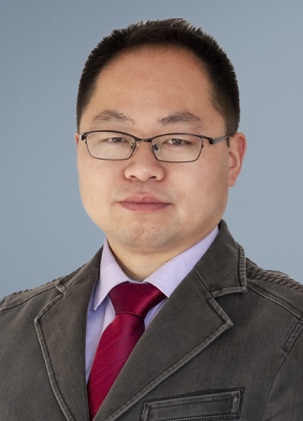Yunjiang Wang1,2,*,Dan Wei1,2,Lanhong Dai1,2
1. State Key Laboratory of Nonlinear Mechanics, Institute of Mechanics, Chinese Academy of Sciences,
Beijing 100190, China
2. School of Engineering Science, University of Chinese Academy of Sciences, Beijing 100049, China
Abstract: Seeking for a reasonable “structure-property” correlation for matter constitutes an eternal subject of materials science. In the last century, people have established complete crystalline plasticity theory in light of the advancements in both microstructure characterization technique and computational materials sciences, as well as the accurate understanding in microscale defects of materials. There have been great processes in improving the macroscopic mechanical properties of materials by controlling the microstructures of materials. As a result, the defects of crystalline materials, e.g. vacancy, dislocation, grain boundary, and deformation twinning can be served as key genes which determines the properties of crystalline materials. However, up to date, people gain very little understanding on the “structure-property” relationship of amorphous solids, not to mention the hidden rule behind the relationship. In this talk, we take amorphous alloy as an example of the general amorphous solids, to seeking a possible gene which governs the “structure-property” relationship of amorphous solids, via the technique of multi-temporal-scale molecular dynamics. For this purpose, we revisit a couple of structural parameters for glassy structures, sampling the activation energies of these structural parameters in order to establish some correlation between them. By this we find that the hidden governing rule of “structure-property” correlation in glass is the critical spatial autocorrelation length of a specific structural parameter. If only one structural descriptor presents spatial autocorrelation length up to sub nanometer level, it can effectively predict the mechanical property of amorphous solids; otherwise, the short-range local structures lacking such correlation length fails to predict property. Furthermore, we present a general metric to test the utility of structure in determining function of the amorphous solids, which can be served as a screening metric to judge effective structures in amorphous solids.
Keywords: multi-temporal-scale simulations; activation energy; amorphous solids; materials genome
基于跨时间尺度模拟的材料结构基因探索
王云江1,2,*,魏丹1,2,戴兰宏1,2
1.中国科学院力学研究所 非线性力学国家重点实验室; 2.中国科学院大学工程科学学院
摘要:探索物质的“结构-性能”关联是材料科学研究的永恒主题。一个世纪以来,借助于微观观测手段与计算材料科学的进步,基于对材料微观缺陷的精准认知,人类发展了完备的晶体材料变形理论,并实现通过调控材料的微观结构特征改善其宏观力学性能。因此,晶体材料的缺陷,比如空位、位错、晶界、变形孪晶等均可视为控制晶体材料性能的关键“基因”。但是到目前为止,科学界对于非晶固体“结构-性能”关系成立与否,以及背后隐藏的规律知之甚少。本报告将以近些年发展的非晶态合金为例,通过跨时间尺度的分子动力学模拟,探索广义非晶态物质“结构-性能”关系背后隐藏的材料基因。我们重新审视多种原子级玻璃结构特征参数,通过海量抽样每种具体结构特征的激活能,尝试将具体结构与激活能建立定量关系。我们发现非晶固体“结构-性能”关联的隐藏主控因素为微观结构的空间自关联长度,即只有某种结构特征在空间上呈现亚纳米级的空间关联长度,这种结构才有可能有效地决定无序固体的力学性能,而短程结构则无效。进一步,我们给出了评价广义非晶态结构在预测性能方面的普适定量方法,为寻找无序物质“结构-性能”关系提供筛选准则。
关键词:跨时间尺度模拟;激活能;非晶态固体;材料基因

中国科学院力学研究所研究员、博士生导师。1981年生,2005年于河北师范大学获学士学位;2010年于清华大学获博士学位,师从王崇愚院士。2010至2013年,先后任大阪大学JSPS特别研究员、京都大学特定助理教授。自2014年开始在中国科学院力学研究所从事研究工作。2010年获日本学术振兴会(JSPS)研究员奖学金,2017年入选中国科学院青年创新促进会会员。主要从事材料物理与力学交叉的多时空尺度计算机模拟工作,在纳米晶体、非晶态物理、加速分子动力学、高温合金等领域开展研究,已在Phys. Rev. Lett., Phys. Rev. B, Acta Mater., J. Mech. Phys. Solids, Appl. Phys. Lett.等刊物发表论文40余篇,引用600余次。主持自然科学基金面上、青年基金等项目;以研究骨干身份参与材料基因工程国家重点研发计划、基金委重大项目、中科院先导项目等重大研究任务。
Email: yjwang@imech.ac.cn